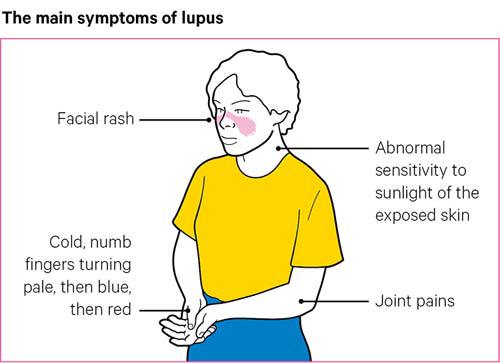
Discoid lupus erythematosus (DLE) is a chronic autoimmune condition that primarily affects the skin. Unlike systemic lupus erythematosus (SLE), which can involve multiple organs, discoid lupus rash mainly causes skin lesions, especially on the face, scalp, and other sun-exposed areas. The rash is one of the key indicators of early-stage lupus, making it crucial for individuals to recognize its symptoms and seek proper treatment. In this blog, we will explore the early signs of discoid lupus rash, its symptoms, and the available treatment options to help manage the condition effectively.
What is Discoid Lupus Erythematosus (DLE)?
Discoid lupus erythematosus (DLE) is a localized form of lupus that primarily affects the skin. It is characterized by the appearance of circular, red, inflamed patches or rashes that can develop into scarring if left untreated. The term “discoid” refers to the shape of the lesions, which are usually round or disc-shaped.
Unlike systemic lupus erythematosus (SLE), which can affect the internal organs such as the kidneys, heart, and lungs, discoid lupus rash is limited to the skin. However, it can significantly impact a person’s quality of life, causing discomfort and emotional distress due to the visible nature of the lesions.
While DLE may not affect organs as extensively as SLE, it can still lead to permanent skin damage, hair loss, and even scarring. Identifying early-stage lupus rashes and starting treatment promptly can help prevent the progression of the disease.
What Does Discoid Lupus Rash Look Like?
A discoid lupus rash typically begins as small, red, scaly patches on the skin. These patches are often round or oval and may become inflamed or develop thick scales. Over time, the lesions may grow in size and become more noticeable, particularly on areas exposed to sunlight such as the face, ears, scalp, and neck.
Common features of the discoid lupus rash include:
- Red or purple rash: The rash is often red or purple in color and may appear slightly raised.
- Scaly and thickened skin: The affected areas may develop thick scales that may resemble eczema or psoriasis.
- Hair loss: When the rash occurs on the scalp, it may lead to hair loss (alopecia) in the affected areas. The hair may not regrow if the underlying inflammation causes permanent scarring of the hair follicles.
- Hyperpigmentation or hypopigmentation: After the rash begins to heal, it can leave behind areas of skin that are either darker (hyperpigmentation) or lighter (hypopigmentation) than the surrounding skin.
- Crusting or ulceration: In severe cases, the rash may ulcerate, leading to open sores or crusting in the affected areas.
In the early stages, the rash is typically confined to specific areas, often starting on the face, scalp, or upper body. Over time, it may spread to other areas, especially if it is left untreated or poorly managed.
Symptoms of Early-Stage Discoid Lupus Rash
The early-stage lupus rash can sometimes be mistaken for other skin conditions, such as eczema, psoriasis, or rosacea. However, the key to distinguishing discoid lupus is recognizing the characteristic appearance of the rash and the symptoms that accompany it. Here are some of the most common skin symptoms of early-stage discoid lupus:
- Red, Raised Rash: The rash often appears as red or purple, raised patches with clearly defined borders. These lesions may be slightly itchy or painful, but not always.
- Scaly and Flaky Skin: As the rash progresses, the affected skin may become scaly and rough, which can contribute to the overall discomfort of the condition.
- Sun Sensitivity: Discoid lupus rash tends to worsen with sun exposure. Ultraviolet (UV) light can trigger or exacerbate the rash, making it more noticeable and inflamed. Photosensitivity is a hallmark feature of DLE.
- Scarring: If the lesions are left untreated, they may lead to scarring of the skin. Over time, the skin may become thickened or develop a leathery texture. Scarring can lead to permanent changes in skin texture, especially on the scalp, where hair follicles can be damaged.
- Hair Loss: When discoid lupus affects the scalp, it can cause localized hair loss or thinning in the affected areas. In severe cases, hair may not grow back after the rash heals.
- Pain or Tenderness: The affected areas may become painful or tender to the touch, especially when the rash is inflamed.
Causes and Risk Factors of Discoid Lupus
The exact cause of discoid lupus rash is still not fully understood, but several factors contribute to the development of the condition. These include:
- Genetics: Family history plays a role in the development of lupus. Individuals with a family history of autoimmune diseases may be more likely to develop DLE.
- Sun Exposure: One of the most significant risk factors for DLE is UV light exposure. The sun’s UV rays can trigger or worsen the rash, causing inflammation and flare-ups. It is important for people with discoid lupus to protect their skin from sun exposure by wearing sunscreen and protective clothing.
- Hormones: Since lupus is more common in women, particularly during their reproductive years, hormonal changes may contribute to the development of DLE. Estrogen, a female sex hormone, is thought to play a role in the immune system’s malfunction, leading to the development of autoimmune diseases like lupus.
- Immune System Dysfunction: DLE occurs when the immune system mistakenly attacks healthy skin cells. This immune dysfunction leads to inflammation and skin lesions, resulting in the characteristic rash.
- Environmental Triggers: Infections, stress, and certain medications can trigger lupus flare-ups and contribute to the development of the rash. Stress, in particular, has been identified as a trigger for many autoimmune conditions, including lupus.
Diagnosing Discoid Lupus
If you notice a rash that resembles the discoid lupus pattern, it’s important to consult with a healthcare provider. A dermatologist will typically conduct a thorough examination of the skin and may perform a skin biopsy to confirm the diagnosis. During a biopsy, a small sample of the affected skin is taken and examined under a microscope to identify the presence of lupus-related changes.
In some cases, additional tests may be necessary to rule out systemic lupus erythematosus (SLE), particularly if there is a concern that the skin rash may be accompanied by internal organ involvement.
Treatment Options for Discoid Lupus Rash
There is no cure for discoid lupus rash, but the condition can be managed with proper treatment. Early intervention is essential to prevent scarring and minimize symptoms. Treatment options focus on reducing inflammation, controlling symptoms, and preventing flare-ups.
- Topical Corticosteroids: The most common treatment for discoid lupus rash is the use of topical corticosteroids. These anti-inflammatory medications can help reduce swelling, redness, and itching associated with the rash. In some cases, stronger topical steroids may be required for more severe cases.
- Calcineurin Inhibitors: If topical steroids are ineffective, calcineurin inhibitors such as tacrolimus or pimecrolimus may be prescribed. These medications help reduce inflammation by suppressing the immune response in the skin.
- Antimalarial Medications: Hydroxychloroquine, an antimalarial drug, is often used to treat lupus-related skin symptoms. It helps to reduce the inflammation associated with the rash and may also be effective in controlling systemic symptoms if SLE is diagnosed.
- Sun Protection: Since sun exposure can worsen the rash, it is essential to protect the skin from UV radiation. People with discoid lupus should use a broad-spectrum sunscreen with an SPF of 50 or higher, wear protective clothing, and avoid direct sunlight, especially during peak hours.
- Steroid Injections: For more severe or persistent lesions, steroid injections may be administered directly into the affected area to reduce inflammation and promote healing.
- Immunosuppressive Medications: In cases where the rash is widespread or resistant to other treatments, immunosuppressive drugs may be prescribed. These medications suppress the overactive immune response and help prevent further damage to the skin.
- Phototherapy: In some cases, phototherapy (light therapy) may be used to treat discoid lupus. This involves exposing the skin to controlled doses of ultraviolet light under medical supervision to reduce inflammation and promote healing.
Living with Discoid Lupus Rash
Living with discoid lupus rash can be challenging, especially when it affects visible areas of the body. People with DLE often experience emotional distress due to the appearance of the lesions and the impact on their self-esteem. It is important to seek support from loved ones, healthcare professionals, and lupus support groups.
Adopting a proactive approach to managing the condition, including regular skin check-ups, using appropriate treatments, and protecting the skin from UV damage, can help reduce the impact of discoid lupus and improve quality of life.
Conclusion
Early-stage discoid lupus rash is one of the key indicators of lupus that should not be ignored. Recognizing the symptoms and seeking early treatment can help prevent scarring and minimize the impact of the disease. With proper medical care, lifestyle adjustments, and sun protection, people with discoid lupus can manage their skin symptoms effectively and maintain a good quality of life. If you notice any signs of discoid lupus rash, consult with a healthcare provider to receive a proper diagnosis and begin appropriate treatment.
